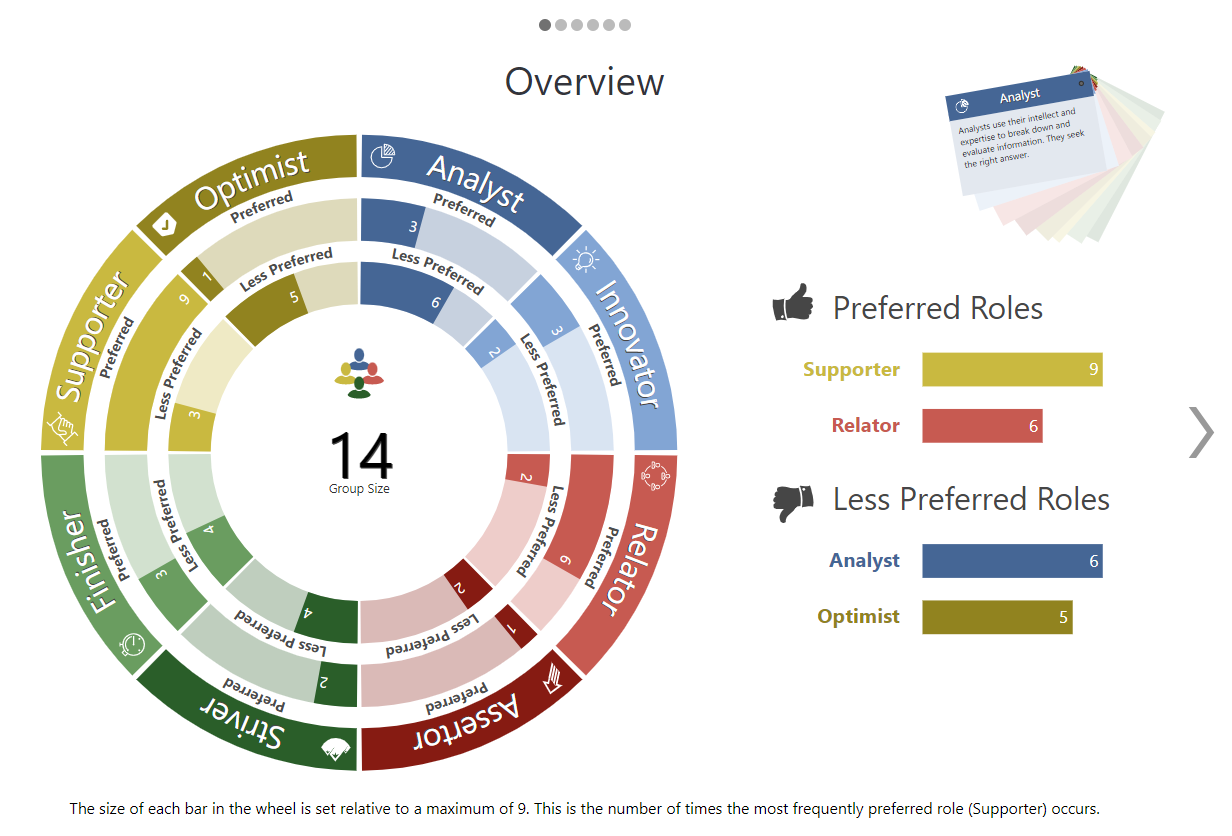Article · 5 minute read
By Karen Fung – 17th January 2023
One of the many things I enjoy doing as a Talent Consultant is working with teams to improve team effectiveness. Speaking with clients, new team formation appears to be a hot topic as people continue to move into different roles. Practitioners are naturally interested in the benefits of conducting team sessions to help these new teams become efficient quickly.
Practitioners are particularly interested in hearing about ways to build awareness of collective strengths and challenges to then improve ways of working and better alignment with business goals.
One theme in these client conversations is that while team sessions aren’t new and are reasonably common in organizations, there appears to be huge variances in their level of effectiveness. So, to better understand team session benefits, I reflected on recent experiences and examined evaluation outcomes to identify a few top tips to impact its success.
Have you been on a team session where it was about one person? You know that colleague who nit-picks at everything, struggles to work collaboratively with everyone else – and the session is about transforming that colleague into a super team player.
These sessions rarely achieve their objectives (whatever it may be positioned as) and it’s because team sessions are less suitable for addressing specific problem situations or individual conflicts within the team. These are better addressed individually and in a less open forum where conversations can be more targeted and sensitively positioned to those involved. Bringing the whole team out in these situations may impact overall levels of openness and trust.
Instead, use team sessions where the objective is to make improvement as a collective and the purpose is meaningful to everyone participating. Design the session so that everyone has a part to play and use it to create the conditions for ideas to flow and bounce off each other so that participants leave with a sense of having contributed to a common goal.
A Process Excellence team at a professional services firm attended a team session to strengthen their collaboration and improve their collective resilient agility during a time of change.
Read the case study here to find out more.
It’s no surprise that participants are more likely to rate a team session as effective if they are sufficiently engaged in it. When thinking about the factors that impact team members’ contribution during a team session, it may be helpful to consider individual styles and preferences, and how they may play out when combined with others in a team session.
Consider this team Work Roles profile:

A team having Supporter and Relator as their preferred role combination is likely to encourage group discussion and debate. They are also likely to make sure the views of everyone are heard.
When this is combined with least preferred roles as Analyst and Optimist, it may mean that the discussions lack sufficient scrutiny and criticism backed by facts and analysis, with a negative undertone and little enthusiasm.
While a Work Roles group session can be useful to reveal strengths and blind spots to the team, conducting one without recognizing the team’s preferred style of working may impact the success of the team session. In the example above, could the negative undertone and lack of enthusiasm make it harder for the team to identify a meaningful action plan?
Granted, the facilitator isn’t there to tell the team how they should work; being mindful of the combination of most/least preferred roles may mean they can establish a mechanism to review ideas shared at specific intervals of the discussion while encouraging the team to think optimistically and move on quicker from setbacks.
In addition to reviewing a team profile for the content of the team session, also consider what it may mean in terms of the team dynamics during the session. This can help with pre-empting and adapting facilitator style to make it easier for participants to engage with the session and contribute meaningfully.
Team sessions can appear in different forms and my go-to approach is to include an online behavioral questionnaire followed by individual feedbacks before bringing it all together on a team session. Regardless of the methodology, the main aim is to build engagement and create collective understanding, identifying better ways of working.
This one seems obvious but how many times have you attended a team session that got carried away, leaving no time for a wrap up? To make sure the great ideas from the team session turn into actions and measurable improvements, it is important to factor time for action planning.
In my experience, a short period of personal reflection followed by a collective stop/start/continue exercise 1 is often helpful. Whatever the action-planning exercise is though, in addition to individual actions, the facilitator can also encourage the group to identify things they can action as a team to instil a sense of camaraderie and collective ownership so it’s less likely that the outcomes of the day become forgotten.
[1] A simple discussion exercise focused on identifying tangible actions that the team should 1) start 2) stop 3) continue doing, in order for them to collectively achieve any goals agreed during the team session.
Karen is a Senior Consultant at Saville Assessment, she has a wealth of experience of running development sessions with high-profile clients, across a wide range of industries, around the globe.
You can connect with Karen on LinkedIn.

Build better teams & harness more effective collaboration with our Work Roles Toolkit.
© 2025 Saville Assessment. All rights reserved.